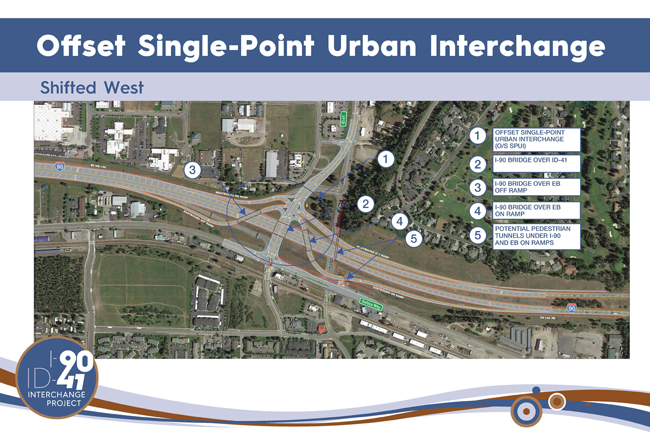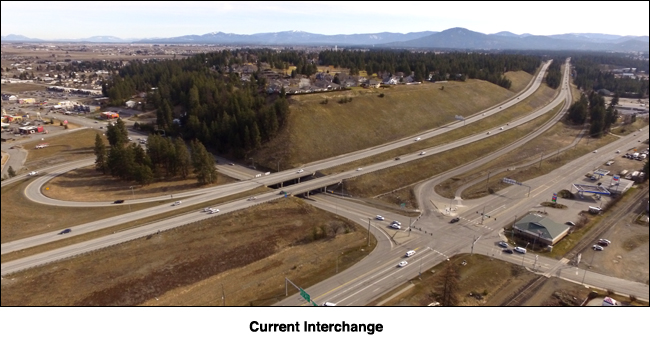

Alternatives merged in new design developed for
Post Falls interchange
![]()
The result of a robust value-engineering process in the last several months, the future design of the Interstate 90 and Idaho Highway 41 interchange has now been selected.
District 1 engineers exchanged ideas with their counterparts at the city of Post Falls, Kootenai County and Federal Highway Administration last year to plan a new look and functionality for this major interchange in Post Falls. The team met for one week, assessing its current condition and considering the needs of the area. These factors helped develop common criteria to evaluate any alternatives.
Of all the possible designs, two were selected for presentation to the public in November 2018 after being evaluated. Although they weren’t ultimately chosen, the latest design was still judged by the team’s criteria. 
The selected alternative originated from public comments and continued brainstorming, producing a design that essentially builds on the advantages of its predecessors.
Called an offset single-point urban interchange (SPUI), it features a SPUI shifted north of the interstate, eliminating the extensive impacts to Seltice Way and other local roads that were considered in the previous alternatives. The highway will still move to the west to better accommodate the ramps, and after passing under the interstate, connects to Seltice Way at Herborn Place.
The offset SPUI eliminates the loop ramp at the westbound exit on I-90, a design element that was well-received in the original SPUI design.
Construction costs are estimated to be $39 million, compared to the estimated $65 million for the earlier SPUI design and the $31 million for the half-diamond design.
“People who spoke with us at the meeting or left a comment provided us with valuable feedback that we tried to integrate in this alternative,” Project Manager Shannon Stein said. “This design achieves the efficiencies of a SPUI interchange, excellent compatibility for future expansion and at a lower cost.”
Members of the public will have a chance to formally comment on the selected design later this year. The project is scheduled to be constructed in 2023, though it could be advanced if funding becomes available.
To view other details about the proposed improvements, visit the project website.

Published 02-01-19